Oh, who lives in a pineapple under the sea, Spongebob Squarepants! Having started in 1999, the popular Nickelodeon cartoon series spans 277 episodes, 14 seasons, and four movies at the time of writing this article. The show was an instant hit with parents and children thanks to the colorful cast of characters, the unique world of Bikini Bottom, and simple but emotional plots.
The most amazing part of this show is how accurate it is to real-life marine biology. Series creator Stephen Hillenburg was a fry cook and lobster boiler for several years during high school, graduated from Humboldt State University in Arcata, California for marine science, and worked as a marine biology teacher for many years. Finally, he followed his passion for art and animation, working on several popular cartoons for Nickelodeon like Rocko’s Modern Life.
After the success of Rocko, Stephen pitched the concept of SpongeBob Squarepants, the story of a young fry cook living under the sea. Nickelodeon green-lit the project and the phenomenal series was born. Like many great writers, Stephen wrote about what he knew and used it to his advantage. This article covers the real-life animals that inspired characters in the popular kid’s show.
Spongebob Squarepants
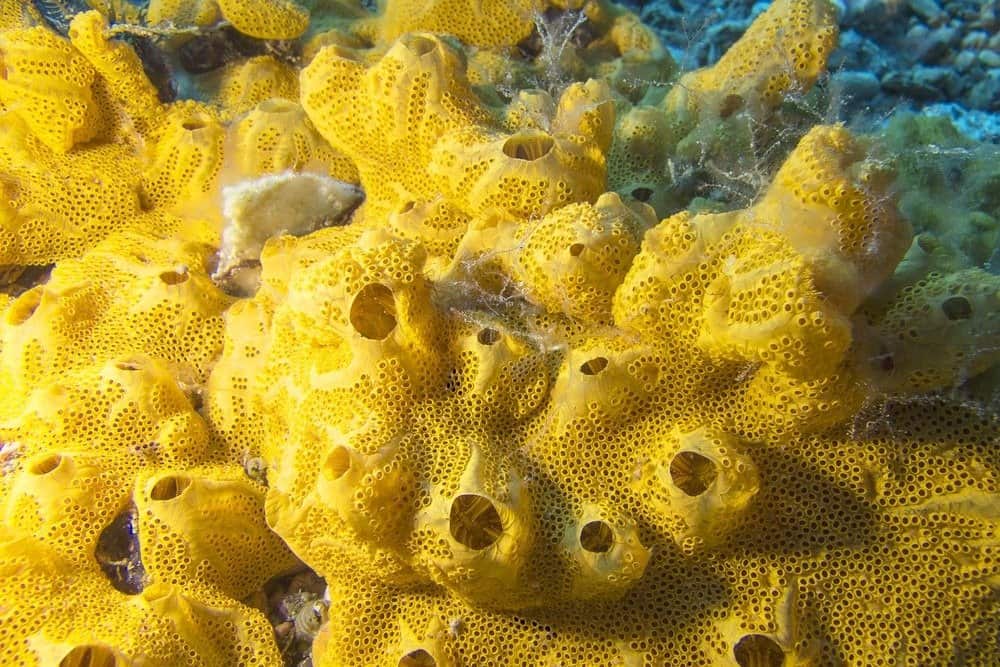
Yellow sea sponges are amazing. They’re capable of regrowing if split from the main body.
©Jolanta Wojcicka/Shutterstock.com
Spongebob is the titular character of the cartoon series. The catchy song intro provides plenty of information about his personality and lifestyle, specifically his absorbency, color, pores, and nautical nonsense.
Spongebob is a yellow tube sponge. They live in coral reefs on ocean floors with strong currents like the Caribbean Sea. These sponges hook onto coral reefs and filter feed through the pores across their body. Yellow tube sponges feed on algae, plankton, bacteria, and dead organic matter.
The yellow tube sponge helps recycle nutrients throughout the coral reef. By filter feeding, they remove dead organic matter and bacteria which can harm the coral reef. They also consume dead coral, turning it into rubble and sand, while leaving nutrients to make the ground fertile for new coral to grow.
Gary the Snail
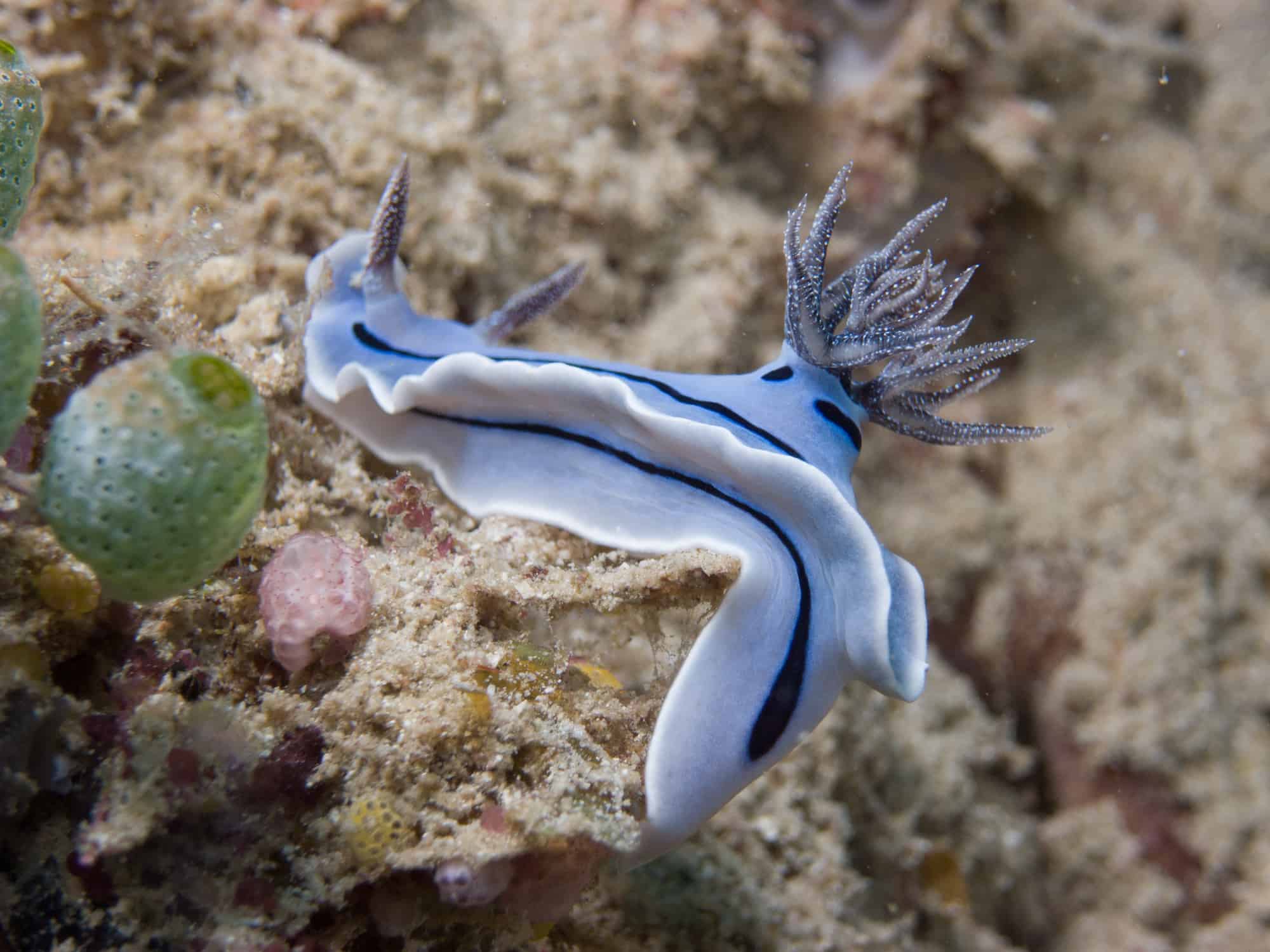
This nudibranch is a type of sea snail that has similar characteristics to Gary.
©anmuelle/iStock via Getty Images
Gary is Spongebob’s loyal and lovable pet snail. Some of the show’s most heartfelt moments revolve around the simple bond between Spongebob and Gary. In the show, Gary is a pink sea snail that acts like a cat.
There are hundreds of sea snails in the ocean, with very few having pink shells. Euopisthobrnachia or Opisthobranchs are sea snails and mollusks that closely resemble Gary, featuring long eye stalks and shells on their back. They live along the ocean floor on coral reefs and tide pools.
Depending on the species, these sea snails can feed on algae, sedentary prey like sponges, or dead organic material. Sea snails and mollusks play an important role in the ecosystem by consuming dead, decaying matter, and producing nutrient-rich excrement to help coral and new plant life grow.
Patrick Star

Giant pink sea stars can detach and regenerate their limbs to escape predators.
©stillhope/iStock via Getty Images
As Spongebob’s best friend and fellow neighbor, Patrick Star goes through a range of character changes as the series progresses. Originally, Patrick was an overweight dimwit with a generous heart and a desire to support his friend. Later in the series, he became a full buffoon, serving as a sidekick to Spongebob.
Patrick is a giant pink sea star. These beautiful sea creatures inhabit the Pacific Coast from Alaska to Southern California. They live at depths of 360 feet and are common in bays and low-tide pools.
Giant pink sea stars are aggressive feeders, devouring an assortment of mussels, clams, mollusks, and sand dollars (flat sea urchins). The giant pink sea star is the largest and heaviest sea star in the world, reaching 3 feet long. They are an important species in the ecosystem because they manage the urchin and mollusk populations. Additionally, giant sea stars are easy prey for other fish and marine life.
Squidward Tentacles

The name Octoward felt weird, so the creator changed it to Squidward.
©Christopher R Mazza/iStock via Getty Images
Squidward is a music-loving resident of Bikini Bottom living between Spongebob and Patrick. Counter to Spongebob and Patrick’s nautical nonsense and playful shenanigans, Squidward enjoys a sophisticated life of classical music and art. Unfortunately, his poor coordination makes him an amateur clarinet player and his self-imposed genius is unappreciated at the Krusty Krab, a fast-food restaurant. Many episodes revolve around Spongebob and Patrick clashing with Squidward in comical interactions.
Contrary to his name, Squidward is an octopus. Squidward possesses six tentacles and the name of a squid, but his unique bulbous head and large size are clear references to the Giant Pacific octopus. The Giant Pacific octopus lives across the Pacific Ocean, especially along the coasts of Alaska, California, and Japan. They are comfortable in tidal pools and depths of 16 feet. Some Giant Pacific octopuses can go 4,920 feet down.
Sandy Cheeks
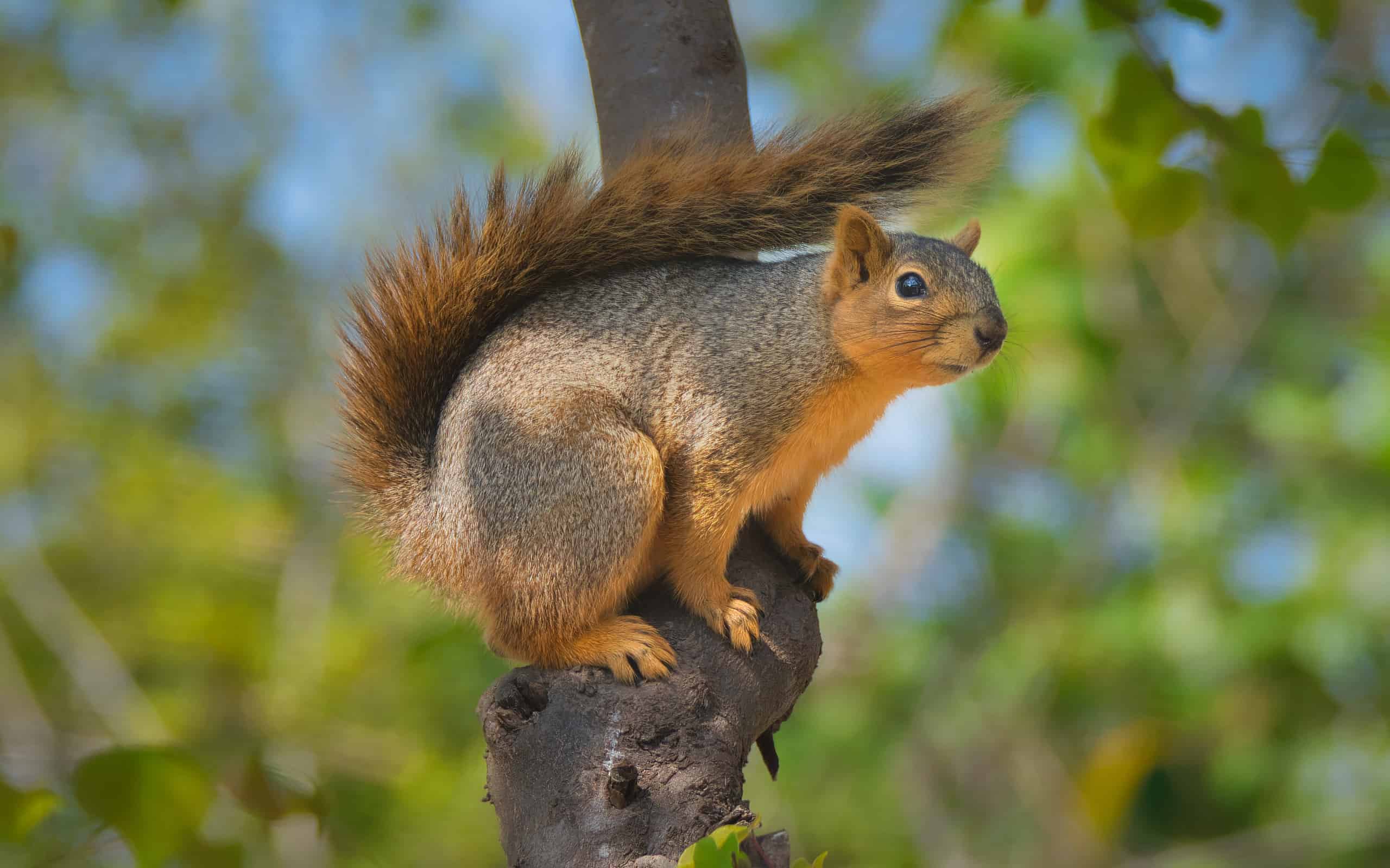
Fox squirrels have average intelligence, often times forgetting where they store nuts in winter.
©Troy Thomas/iStock via Getty Images
Sandra (Sandy) Jennifer Cheeks is a brown squirrel from Texas who wears a diving suit to live with her friends and neighbors in Bikini Bottom. She is an extremely intelligent scientist and expert martial artist, usually helping Spongebob and Patrick out of difficult situations. She lives in a giant dome that provides her with fresh air, a large tree, and a lab to create a variety of inventions and perform experiments.
Sandy’s brown coloring and Texan accent indicate that she is a fox squirrel. Fox squirrel’s hair comes in several shades of red and brown. These critters are native to Canada, North and South Dakota, Colorado, and Texas. Like most squirrels, they feed on an assortment of nuts (acorns, walnuts), berries, fruits, corn, and small insects.
Fox squirrels spread nuts, creating new trees. They are prey for small predators like foxes and coyotes.
Mr. Eugene Harold Krabs
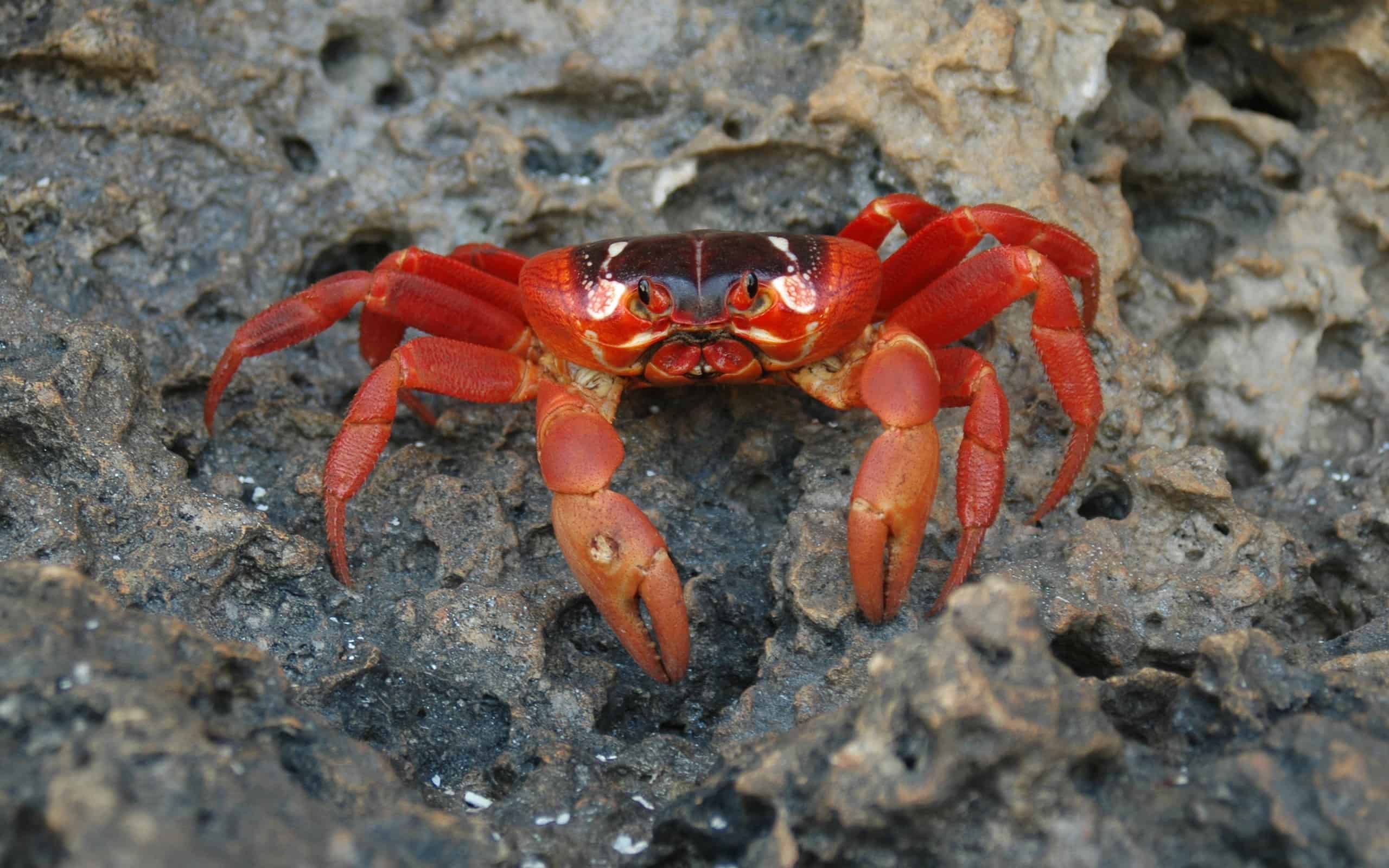
Crabs help keep their ecosystem clean while serving as a delicious meal for predators.
©Zinni-Online/iStock via Getty Images
Mr. Krabs is the owner of the Krusty Krab, serving as Spongebob and Squidward’s boss. He is a strict businessman who is obsessed with money, doing whatever he can to hoard money to the detriment of himself or others. However, he does care for his employees, willing to fight and defend them when a situation arises. His acts of kindness are due to love, but also because it would cost too much to train new employees.
Mr. Krabs is a generic red crab but closely resembles either a crimson sea crab or a Christmas Island red crab. Many red crabs live on forest floors where their exoskeleton blends in. However, they are also found on shorelines, ocean floors, and wet regions.
Red crabs feed on a variety of substances like leaves, fruits, seedlings, algae, worms, mollusks, bacteria, and fungi. They are like janitors of the forest and ocean floor. By eating the bacteria and fungi lying around, they clean the soil of decomposing matter, leaving the ground with healthy nutrients for new and healthy plants to grow.
Sheldon J. Plankton
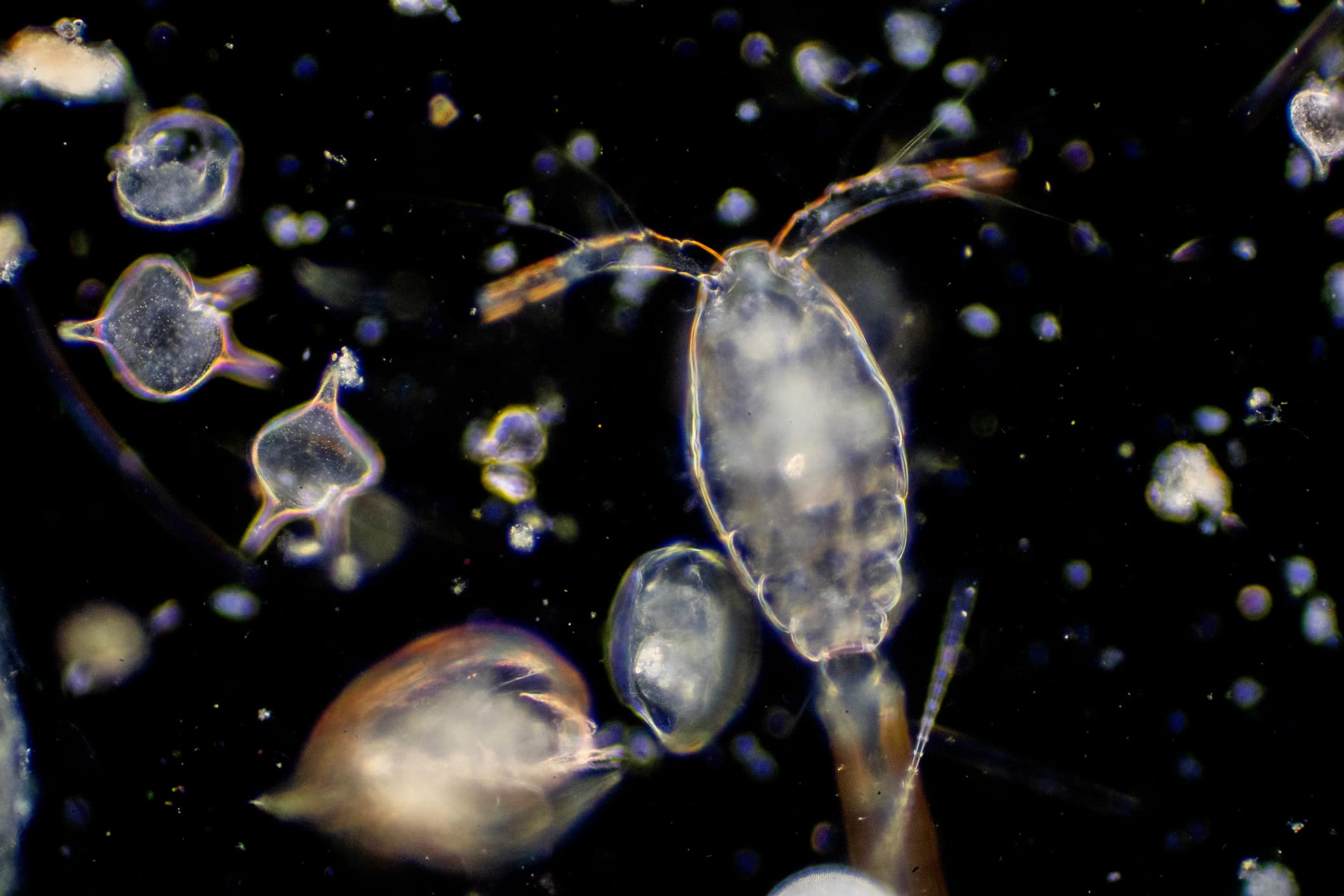
The character Plankton is a combination of zooplankton (seen above) and phytoplankton.
©tonaquatic/iStock via Getty Images
Plankton is a one-eyed plankton that is one of the few antagonists of the series. He owns the Chum Bucket, a failing rival business to the more successful Krusty Krab. Plankton’s sole goal is to steal the secret formula for a krabby patty to improve his business and ruin Mr. Krab’s restaurant. But his schemes are always defeated because of his tiny stature. Plankton is intelligent, cunning, and a former best friend of Mr. Krabs before an emotional falling out.
There are thousands of different types of plankton in the ocean. He eats holographic food, indicating he sustains himself from the light like phytoplankton, but his head tendrils appear more like those of copepods or zooplankton.
Copepods live in fresh saltwater in streams, rivers, lakes, and the open ocean. They feed on phytoplankton and energy from the sun. Plankton are a key element in the ecosystem because they transfer phytoplankton and their nutrients to other animals that feed on them.
Mrs. Penelope Puff

Puffer fish and
porcupine
fish as often found at ocean novelty shops as decoration.
©FtLaudGirl/iStock via Getty Images
Mrs. Puff is the driving instructor at the Bikini Bottom boating school Spongebob attends. A running gag in the series involves Spongebob crashing a boat, causing Mrs. Puff to expand.
Mrs. Puff is a porcupine fish, a variant of the puffer fish. Porcupine fish live in coral reefs in tropical and subtropical oceans. They feed on urchins, gastropods (slugs and snails), and crustaceans. Their role is to protect the coral reef.
The Jellyfish
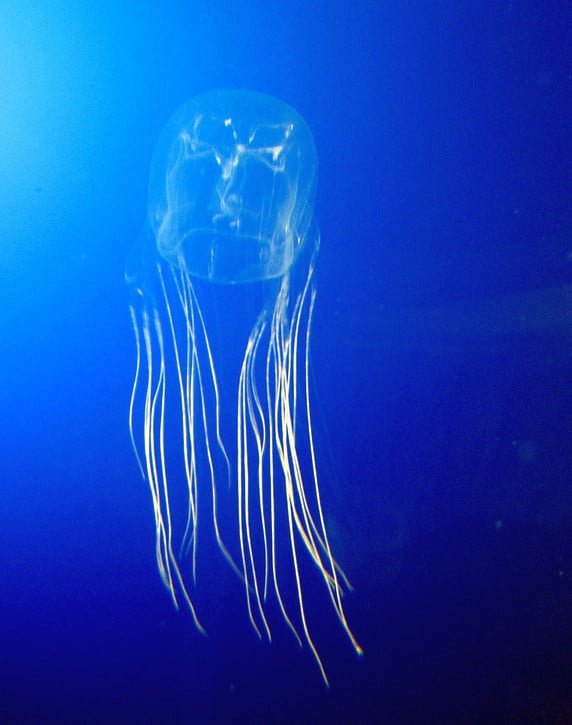
Box
jellyfish
are some of the most dangerous jellyfish in the ocean.
©Avispa marina.jpg: Guido Gautsch, Toyota, Japanderivative work: Mithril, CC BY-SA 2.0 - License
The jellyfish are akin to butterflies and bees in Bikini Bottom. They reside in jellyfish fields where jellyfish catchers like Spongebob, Patrick, and the infamous sea cucumber Kevin catch them for sport. Bikini Bottom jellyfish secrete a tasty jam safe for consumption but use their tentacles to cause severe stinging.
The box jellyfish is the clear inspiration for the Bikini Bottom jellyfish. They have the same pink or clean coloring, long tendrils, and a dome-like shape. They both produce a venomous shock that can stun fish or kill humans. Additionally, these jellies live in the Indo-Pacific regions of North Australia. Box jellyfish feed on small fish, worms, and crustaceans, helping to manage small marine populations while feeding sea turtles and other large predators.
Other Bikini Bottom Residents

The show never explains how Mr. Krabs adopted a young sperm whale as a daughter.
©Animalgraphy/Shutterstock.com
The following characters help fill out the rest of Bikini Bottom’s population but are not primary characters in stories:
- Larry the lobster = red lobster
- Pearl = Mr. Krab’s adoptive sperm whale daughter
- Perch Perkins = a perch who reads Bikini Bottom news
- Old Man Jenkins = a series of different elderly fish
- Bubble Bass = a large-mouth bass
- Squilliam Fancyson = a Giant Pacific octopus and rival to Squidward
The photo featured at the top of this post is © Zhocho_wi/Shutterstock.com
Thank you for reading! Have some feedback for us? Contact the AZ Animals editorial team.






